
Kód: 09233494
Paradox of Body, Building and Motion in Seventeenth-Century England
Autor Kimberley Skelton
This book examines how seventeenth-century English architectural theorists and designers rethought the domestic built environment in terms of mobility, as motion became a dominant mode of articulating the world across discourses e ... celý popis
- Jazyk:
 Angličtina
Angličtina - Väzba: Pevná
- Počet strán: 204
Nakladateľ: Manchester University Press, 2015
- Viac informácií o knihe

170.40 €

Skladom u dodávateľa v malom množstve
Odosielame za 10 - 15 dní
Potrebujete viac kusov?Ak máte záujem o viac kusov, preverte, prosím, najprv dostupnosť titulu na našej zákazníckej podpore.
Pridať medzi želanie
Mohlo by sa vám tiež páčiť
-
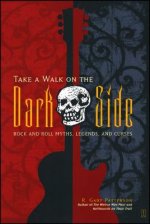
Take a Walk on the Dark Side
21.77 € -

Mid-Atlantic American Sports Car Races 1953-1962
136.09 € -
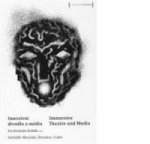
Imerzivní divadlo a média / Immersive Theatre and Media
7.59 € -6 % -
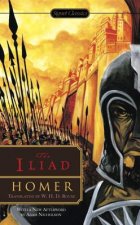
Iliad
8.10 € -3 % -

Locos por las ventas
18.17 € -

Mainzer Rad
12.73 € -4 %
Darčekový poukaz: Radosť zaručená
- Darujte poukaz v ľubovoľnej hodnote, a my sa postaráme o zvyšok.
- Poukaz sa vzťahuje na všetky produkty v našej ponuke.
- Elektronický poukaz si vytlačíte z e-mailu a môžete ho ihneď darovať.
- Platnosť poukazu je 12 mesiacov od dátumu vystavenia.
Viac informácií o knihe Paradox of Body, Building and Motion in Seventeenth-Century England
Nákupom získate 420 bodov
 Anotácia knihy
Anotácia knihy
This book examines how seventeenth-century English architectural theorists and designers rethought the domestic built environment in terms of mobility, as motion became a dominant mode of articulating the world across discourses encompassing philosophy, political theory, poetry, and geography. From mid-century, the house and estate that had evoked staccato rhythms became triggers for mental and physical motion - evoking travel beyond England's shores, displaying vistas, and showcasing changeable wall surfaces. Simultaneously, philosophers and other authors argued for the first time that paradoxically, the blur of motion immobilised an inherently restless viewer into social predictability and so stability. Alternately feared and praised early in the century for its unsettling unpredictability, motion became the most certain way of comprehending social interactions, language, time, and the buildings that filtered human experience. At the heart of this narrative is the malleable sensory viewer, tacitly assumed in early modern architectural theory and history yet whose inescapable responsiveness to surrounding stimuli guaranteed a dependable world from the seventeenth century.
 Parametre knihy
Parametre knihy
Zaradenie knihy Knihy po anglicky Humanities History Regional & national history
170.40 €
- Celý názov: Paradox of Body, Building and Motion in Seventeenth-Century England
- Autor: Kimberley Skelton
- Jazyk:
 Angličtina
Angličtina - Väzba: Pevná
- Počet strán: 204
- EAN: 9780719095801
- ISBN: 0719095808
- ID: 09233494
- Nakladateľ: Manchester University Press
- Hmotnosť: 574 g
- Rozmery: 163 × 241 × 17 mm
- Dátum vydania: 01. March 2015
Obľúbené z iného súdka
-

Hundred Years' War on Palestine
12.11 € -24 % -

Ten Myths About Israel
12.52 € -16 % -

Diana: Her True Story - In Her Own Words
12.32 € -23 % -

Dictatorland
13.75 € -8 % -

Anatomy of the Nuremberg Trials
17.66 € -3 % -

Line in the Sand
11.70 € -7 % -

Conquest of New Spain
14.47 € -23 % -

History of Venice
18.79 € -23 % -

Pity of War
20.94 € -23 % -

We Were Soldiers Once...And Young
12.32 € -23 % -

Palestinian-Israeli Conflict: A Very Short Introduction
12.62 € -10 % -

Cuneiform
11.19 € -23 % -

Slightly Out of Focus
15.09 € -22 % -

Great War for Civilisation
20.12 € -22 % -

Great Siege, Malta 1565
17.97 € -16 % -

Imperial Japanese Naval Aviator 1937-45
24.75 € -

Flame Trees Of Thika
12.32 € -23 % -

Battle of Britain
16.63 € -23 % -

Fortress Third Reich
27.83 € -

Bismarck and the Development of Germany
104.35 € -

Arthur and the Anglo-Saxon Wars
17.97 € -4 % -

Drawing on Archaeology
27.31 € -4 % -

Brief History of the Hundred Years War
12.32 € -23 % -

British Culture
75.08 € -

Life of Anne Boleyn Colouring Book
11.39 € -4 % -
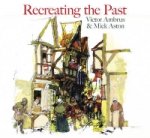
Recreating the Past
20.84 € -

Setting the Desert on Fire
16.32 € -13 % -

Fortress France
24.44 € -

History of Siam
42.10 € -

Oxford History of the Biblical World
18.89 € -19 % -

British Destroyers 1939-45
14.47 € -23 % -

P-40 Warhawk Aces of the MTO
29.16 € -

Ethnic Cleansing of Palestine
14.47 € -23 % -

Decline and Fall of the Roman Empire
5.95 € -21 % -

Strange Death of Europe
16.53 € -23 % -

The Balkans, 1804-2012
22.07 € -23 % -
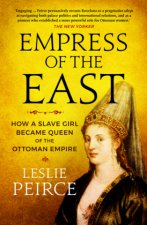
Empress of the East
14.47 € -23 % -

Palestine
20.23 € -22 % -

The Secret Diaries Of Miss Anne Lister: Vol. 1
13.55 € -15 % -

Giza Power Plant
16.01 € -17 % -
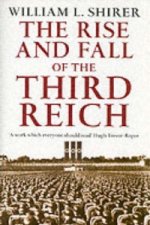
Rise And Fall Of The Third Reich
22.07 € -23 % -

Citizens
22.07 € -23 % -

Millennium
13.24 € -24 % -
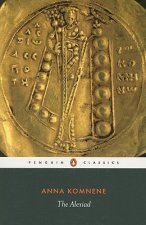
Alexiad
17.86 € -20 % -

Maurice's Strategikon
30.70 € -2 % -

Voynich Manuscript
41.49 € -

Last Voyage of the Lusitania
20.74 € -

1948
24.75 € -10 % -
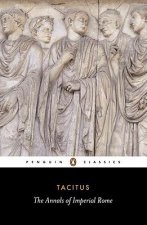
Annals of Imperial Rome
14.47 € -23 %
Osobný odber Bratislava a 2642 dalších
Copyright ©2008-24 najlacnejsie-knihy.sk Všetky práva vyhradenéSúkromieCookies


 21 miliónov titulov
21 miliónov titulov Vrátenie do mesiaca
Vrátenie do mesiaca 02/210 210 99 (8-15.30h)
02/210 210 99 (8-15.30h)